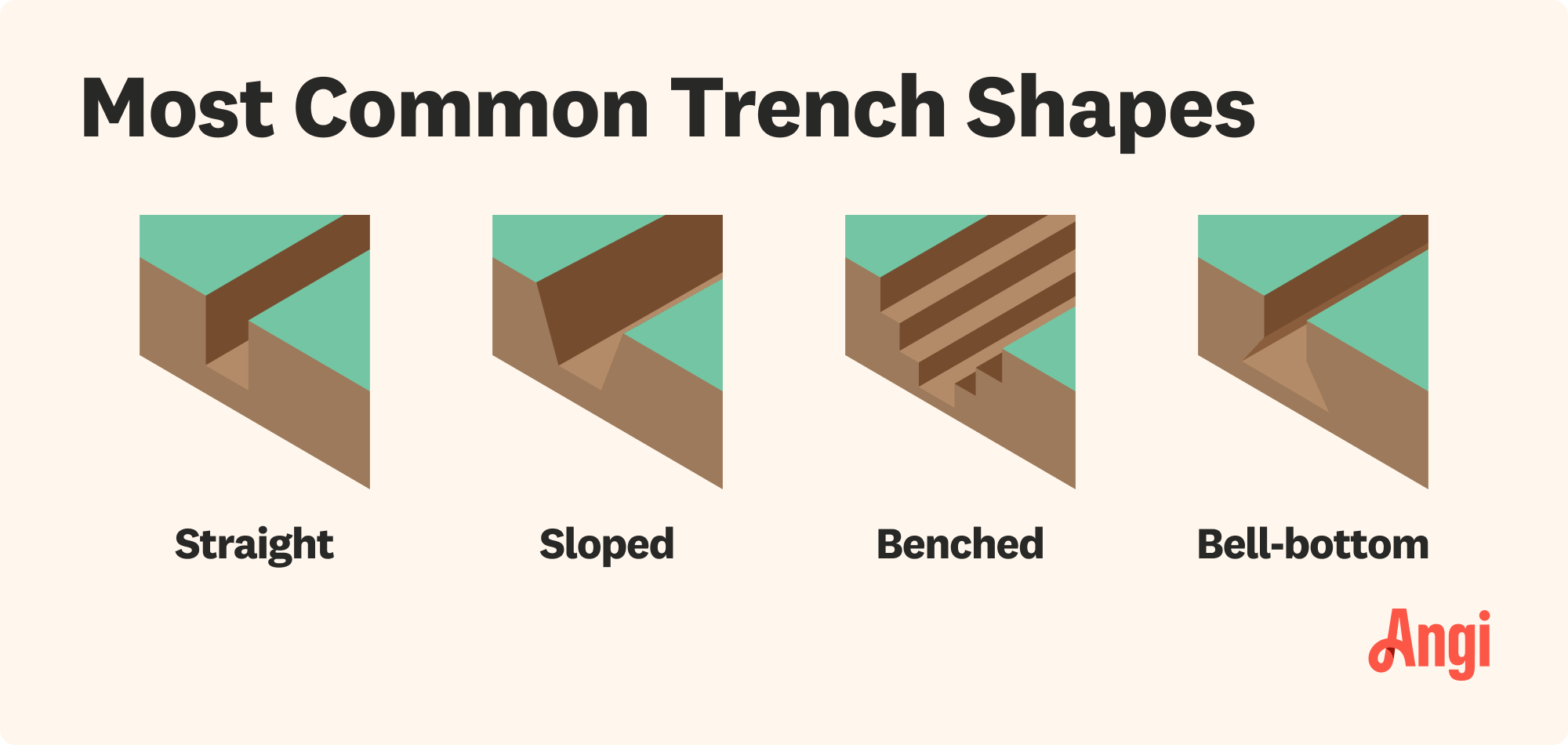
Excavation costs $1,500 to $6,300 for most residential projects—but it depends on factors like the size of the area. This guide will help you plan a budget.
Let’s dig into a comparison


Landscape edging doesn’t dig very far into the ground, but trenching involves digging between 1 foot and 18 feet deep.
Trenching is often used for construction projects, including wiring and plumbing, and edging is used for landscaping projects.
To dig a large trench, you’ll have to use heavy machinery, but landscape edging can be done with smaller, simpler-to-operate edger tools.
If you’re planning a construction or landscaping project on your property that involves excavating the soil, you might wonder whether trenching or edging is the right method. Well, it all depends on how deep you need to dig. Trenching creates narrow yet deep channels that can go many feet into the soil, making it the go-to choice for adding pipes or wires to your property. But if you want a more shallow border for your lawn or garden, edging is the way to go.
Let’s see what we can dig up about trenching versus edging.
Both trenching and edging involve cutting or digging into the soil's surface. Choosing one or the other depends on how far down you’re digging and for what purpose. Take a look at some of the key differences between trenching and edging.
| Type of Difference | Trenching | Edging |
|---|---|---|
| Tool used | Trencher | Edger |
| Project | Construction | Landscaping |
| Depth | 1–18 feet | Shallow |
| Impact on landscape | Extensive | Minimal |
| Needs maintenance | Rarely | Regularly |
| DIY vs. hiring a pro | Consider hiring a pro | DIYable, but a pro can offer cleaner results |

Trenching often involves filling said trench with soil after you’ve completed your project. Once the job is complete, you may not even know there’s a trench there (after the grass grows back, that is). With edging, everyone will be able to see your beautifully manicured lawn with its smooth edges, and they can appreciate the time and effort that went into it.
You don’t need to be a professional excavator or even an advanced DIYer to understand the difference between trenching and edging. Trenching goes 1 foot or more into the ground, but edging goes only a couple of inches. Even a shallow trench goes deeper than edging.
Depending on the size and depth of the trench, you might need a manual tool or a heavy machine to do the work. If you want to dig a small hole, use a shovel. To dig a larger or deeper trench, you’ll need a trencher. Trenchers take a lot of skill to operate, so consider hiring an excavation pro near you if you need a large trench for your project.
Edging is too precise for a shovel, but you can get away with using a manual tool for the job. However, if your edging project is large or complex, consider using an electric edger or another type of automatic edger.
Trenching is used for extensive projects, including the installation of utility wires, drainage pipes, and irrigation systems that live several feet deep in the soil. Want to create neat borders for a walkway, lawn, or garden? Look into landscape edging. All types of landscape edging provide attractive, clearly defined perimeters for your yard.
Trenching requires extensive work, but the good news is that it won’t require upkeep. However, if something goes wrong in the future with the buried wires and pipes, you’ll need a pro to come dig them up and assess the issue.
Edging requires regular maintenance to keep everything looking neat and orderly. We recommend that you edge your lawn every two weeks. Since landscape edging requires only shallow digging, this is something a DIYer can easily handle.
From average costs to expert advice, get all the answers you need to get your job done.

Excavation costs $1,500 to $6,300 for most residential projects—but it depends on factors like the size of the area. This guide will help you plan a budget.

If you need to dig a trench, you might be tempted to do it yourself instead of hiring a pro. So, how much does it cost to rent a trencher? Let’s break it down.

If you’re building a new home, you might need to consider the cost of digging out a basement. Use this pricing guide to get an estimate for the project.

When digging for utility installation, you may wonder if gas and electric can be in the same trench. Find out the basics to utility trenches in this guide.

Trenching is simpler and boring is best for complex properties. Learn all about boring versus trenching and when to use each.

When prepping a trench, you may ask, “Will a trencher cut through roots?” Learn how a trencher can effectively complete your excavation project with this guide.